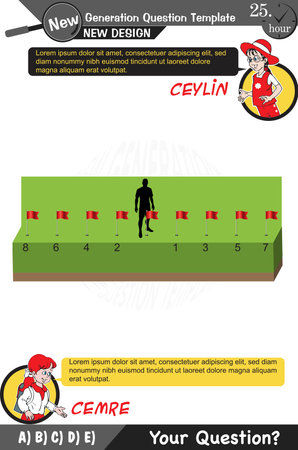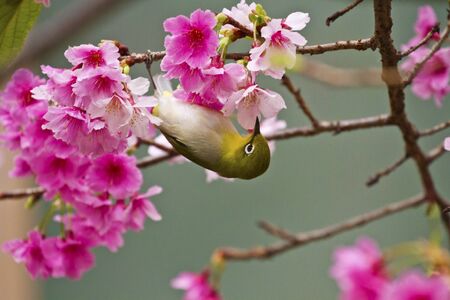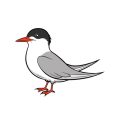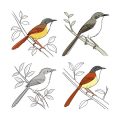Understanding the Importance of Nesting Boxes in UK Gardens
Supporting local bird populations is a vital aspect of encouraging biodiversity within UK gardens. With increasing urban development and changes in traditional building practices, natural nesting sites such as old trees and hedgerows are disappearing at an alarming rate. By providing purpose-built nesting boxes, garden owners play a crucial role in offering safe breeding spaces for native birds. Iconic British species such as blue tits, great tits, house sparrows, and robins all benefit from well-placed and properly designed boxes. These birds, in turn, help control garden pests and contribute to the overall health of the local ecosystem. Installing nesting boxes not only supports vulnerable bird populations but also enhances the richness and diversity of wildlife in your area, making gardens more lively and resilient against environmental changes.
Choosing the Right Nesting Box for British Birds
Selecting the appropriate nesting box is crucial to supporting local bird populations in UK gardens. The choice depends on the species you wish to attract, as different birds have unique preferences for box design, entrance size, and materials. A well-chosen nesting box not only encourages birds to settle but also helps protect them from predators and harsh weather.
Types of Nesting Boxes
There are two primary types of nesting boxes commonly used in British gardens:
- Small-hole nest boxes: Designed for species like blue tits, great tits, and house sparrows. These boxes feature a circular entrance hole that provides security from larger birds and mammals.
- Open-fronted nest boxes: Favoured by robins, wrens, and pied wagtails. These have an open front that allows easy access for these species while still offering some protection.
Entrance Hole Sizes
The size of the entrance hole is a key factor in determining which species will use the box. Refer to the table below for recommended sizes:
| Bird Species | Recommended Entrance Hole Size (mm) |
|---|---|
| Blue Tit, Coal Tit, Marsh Tit | 25 |
| Great Tit, Tree Sparrow | 28 |
| Nuthatch, House Sparrow | 32 |
| Starling | 45 |
| Robin, Wren (open front) | No hole; 100mm high open front |
Materials and Construction
- Wood: The traditional and most widely recommended material is untreated timber at least 15mm thick. This thickness provides adequate insulation against temperature fluctuations.
- Plywood or MDF: Not generally advised as they deteriorate quickly in damp British weather.
- Avoid metal or plastic boxes as they can cause overheating and condensation inside, putting chicks at risk.
Box Design Considerations
- Add drainage holes at the base to prevent waterlogging.
- A sloping roof helps rainwater run off efficiently.
- The box should be easy to open for end-of-season cleaning but secure enough to keep out predators.
Sustainability Tip
If possible, use FSC-certified wood or reclaimed materials to reduce environmental impact. Painting the outside with a non-toxic preservative can extend its life while keeping it safe for wildlife.

3. Best Placement Tips for Nesting Boxes in Your Garden
Getting the placement right is crucial to ensure that your nesting boxes attract garden birds and keep them safe. Here are some practical, UK-specific guidelines:
Optimal Locations
Choose a quiet part of your garden where the nesting box will be undisturbed by frequent human activity or pets. Positioning it near natural shelter, such as hedges or mature shrubs, can help birds feel more secure. Avoid areas exposed to direct sunlight all day or prevailing winds, as this can lead to overheating or chilling of eggs and chicks.
Recommended Height
The ideal height for a nest box depends on the bird species you hope to attract, but a good general rule for most UK garden birds is between 1.5 and 4 metres above ground level. Blue tits and great tits prefer boxes fixed at about 2–4 metres, while robins and wrens are content with lower placements, around 1–2 metres, especially in dense cover.
Correct Orientation
To protect the box from harsh British weather, face the entrance hole between north-east and south-east. This orientation shields the box from heavy rain and strong midday sun, helping to maintain a stable temperature inside. Always tilt the box slightly forward so water cannot collect on the roof or enter through the hole.
Avoiding Common Hazards
Predators such as cats and squirrels are common in UK gardens. Mount boxes away from easy climbing routes (like fences or overhanging branches) and use baffles or metal plates around the entrance if necessary. Ensure there are no perches on the front of the box—these only help predators. Also, steer clear of areas where pesticides or lawn treatments are used, as these can harm both adults and nestlings.
Weather Protection
If your garden is exposed, consider additional weatherproofing such as placing boxes under eaves or using natural cover for extra insulation. Always check that boxes remain secure after storms or strong winds throughout the breeding season.
Summary
By choosing sheltered spots at suitable heights, facing boxes away from prevailing weather, and minimising risks from predators and chemicals, you’ll give your local garden birds their best chance for a safe and successful breeding season.
4. Proper Installation: A Practical Step-by-Step Guide
Ensuring your nesting box is installed correctly is essential for the safety of both birds and your property. This guide will walk you through the recommended tools, fixings, and steps to securely mount your bird box without causing harm to trees or structures.
Essential Tools and Materials
| Tool/Material | Purpose | UK Recommendation |
|---|---|---|
| Cordless drill/screwdriver | Securing fixings | Lightweight, battery-operated models are ideal for outdoor use |
| Stainless steel screws (not nails) | Attaching box to trees or walls | Minimises rust and damage; 50-70mm length usually sufficient |
| Galvanised wire with hosepipe sleeve | Alternative fixing for trees | Prevents girdling and allows tree growth |
| Spirit level (optional) | Ensuring correct orientation | Keeps entrance slightly tilted forward to shed rainwater |
| Ladder (if required) | Reaching installation height safely | Select a stable, British Standards-approved ladder for garden use |
| PPE (Gloves & Safety Glasses) | Personal protection during installation | Recommended for working at height or using power tools |
Main Fixing Methods Explained
- Screws into Trees: Use two long stainless steel screws, angled slightly downwards. Pre-drill pilot holes if possible. Place the screws on the upper back panel of the box. This method provides stability but avoid overtightening as it can damage living wood.
- Wire Around Trees: Loop galvanised wire around the trunk or branch, threading it through a short section of old garden hose to prevent abrasion. Avoid using string or thin wire that may cut into bark as the tree grows.
- Screws into Walls or Fences: Securely fix using wall plugs and stainless steel screws if mounting on brick or wooden surfaces. Ensure box is flush against the surface to prevent draughts and water ingress.
Step-by-Step Installation Process
- Select Your Spot: Choose a quiet, sheltered location out of direct sunlight and away from feeders or areas with heavy foot traffic.
- Check Height: For most UK garden birds, 1.5–3 metres above ground is ideal. Avoid placing boxes too low where cats or predators can reach easily.
- Pilot Holes: If using screws, drill small pilot holes in both the box and fixing surface to minimise splitting and ensure alignment.
- Attach Securely: Fasten with appropriate fixings as outlined above. Double-check stability by gently shaking the box—there should be no wobble.
- Tilt Forward Slightly: Angle the nest box so rain runs off the roof and away from the entrance hole.
- Avoid Damage: Do not use nails directly into living trees or materials that could constrict as plants grow. Re-check wire fixings each year to loosen if needed.
- Final Inspection: Confirm there are no sharp edges or protruding fasteners inside or outside the box before leaving it for potential residents.
Troubleshooting Common Issues
- If the nesting box wobbles, check that all fixings are tight and consider adding a third point of contact for extra stability.
- If moisture builds up inside, verify that ventilation holes are clear and that the entrance faces away from prevailing winds (typically north-east in most UK gardens).
- If you must relocate a box, do so only during autumn when it’s unlikely to disturb nesting activity.
This practical approach ensures your nesting box offers a safe haven for local birds while protecting your garden’s natural beauty and integrity.
5. Maintaining and Cleaning Your Nesting Boxes
Keeping your nesting boxes in good condition is crucial for the health and safety of UK garden birds. According to RSPB and British Trust for Ornithology guidelines, regular maintenance ensures that your boxes remain attractive to birds while reducing the risk of disease. The best time to clean out nesting boxes is between September and January, once you are sure breeding has finished and any fledglings have left. Never disturb an occupied box during the breeding season, as this can be harmful or even illegal under UK law.
Cleaning Routine
Start by wearing gloves and a mask to protect yourself from parasites or dust. Open the box carefully and remove all old nesting material, unhatched eggs (which must be disposed of legally), and any debris. Scrub the inside with boiling water—avoid using chemicals or disinfectants, as these can be harmful to birds. Allow the box to dry thoroughly before closing it up for the winter.
Safety and Welfare Considerations
It’s important not to clean too early or too often; birds may roost in boxes during colder months, so always check first before opening. Inspect for signs of damage or infestation by wasps, ants, or rodents, and repair any issues promptly. Replace rotten wood, tighten screws, and ensure drainage holes remain clear. Responsible cleaning supports bird welfare by minimising parasites such as fleas or mites.
Additional Tips for UK Gardens
If you spot evidence of predators or persistent pests, consider relocating the box or adding extra protection like metal plates around the entrance hole. Log your cleaning dates in a simple notebook or spreadsheet—this engineering-minded approach helps track usage patterns and ensures consistent care year after year.
6. Legal and Ethical Considerations in the UK
When installing nesting boxes for garden birds in the UK, it’s crucial to remain informed about relevant legal and ethical responsibilities. The Wildlife and Countryside Act 1981 is the primary piece of legislation protecting wild birds, their nests, and eggs. Under this law, it is illegal to intentionally disturb active nests, remove or damage eggs, or interfere with nesting birds during the breeding season. To stay compliant, householders should install or clean out nest boxes outside of the main breeding period—ideally between September and January—to avoid disturbing resident wildlife.
Access and maintenance should be planned with care. Once a bird has started using a nesting box, you must not open or handle the box until after the fledglings have left. It is also important to ensure that boxes are placed safely out of reach from predators and away from regular human disturbance, supporting both legal compliance and bird welfare.
Ethical responsibilities extend beyond legal requirements. This includes monitoring boxes discretely to avoid causing distress, providing suitable habitats without favouring invasive species, and maintaining a clean environment to minimise disease risks. Householders should also consider the impact of feeding practices and garden management on local bird populations.
In summary, when choosing and installing nesting boxes for UK garden birds, always adhere to national laws regarding timing and disturbance, respect the needs of native species, and act with consideration for the broader ecosystem. Responsible stewardship ensures that our gardens remain safe havens for wildlife while staying within the bounds of British conservation law.


